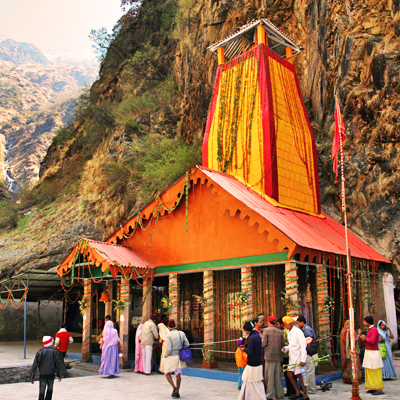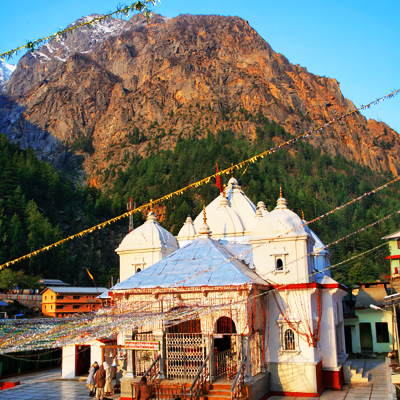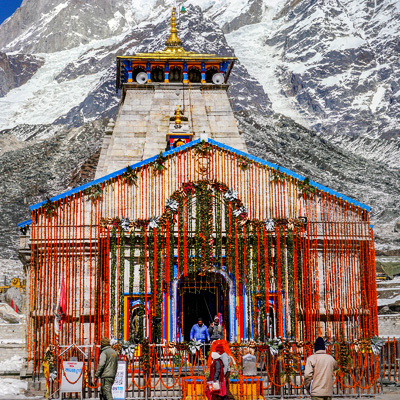A Guide to Char Dham Yatra
A very famous spiritual Yatra (Trip) in India is the Char Dham Yatra. Everyone in India has a dream to complete this yatra.
The four Places in the Himalayas include the four sacred shrines of Hindus, Badrinath, Kedarnath, Gangotri and Yamunotri.
It is admired as one of the holiest expeditions in the world everyone wants to complete.
These four temples are lodged in isolation, among the powerful Himalayan peaks.
Nothing is more spells affection than a visit to the Char Dham’s.
Mother Ganga, Yamuna, Lord Vishnu, and the powerful Shiva exist in their most refined manifestations up there.
For all Hindus in India, it is the closest one can come to participating in divine bliss.
To visit these sacred places, the devotees not only come from India but also, from all over the world as the popularity of the Char Dham is growing tremendously.
It is the fact, that people from all over the world are coming to India in curiosity to know more about the culture of India.
Given the spectacular beauty, the Himalayan charm, dense forests, big valleys and epic nature all around – Char Dham Yatra makes for the most majestic of travels to participate in.
What is Char Dham Yatra and Why is it so important?
Char Dham Yatra is the tour of the four holy sites, Yamunotri, Gangotri, Kedarnath, and Badrinath lodged high up in the Himalayas.
It is also referred to as a “Chota Char Dham” to distinguish it from the bigger circuit of the Char Dham sites.
In India, it is also believed that everyone should do this yatra once in a lifetime.
“Aadi Shankaracharya” The great reformer and philosopher, assembled together all these holy expeditions placed into a spiritual circuit around the 8th century.
Thousands of devotees and generation follows generation have kept up the tradition of shielding these pilgrimage spots every year.
Only once during the year, all Char Dham is closed for six months during the winter season due to the heavy snowfall and all temples become inaccessible.
The Gods and Goddesses from all temples are moved to their “Winter Abodes” during this period.
History of Char Dham Yatra
One of the well-known, great reformers and scholars, Adi Shankaracharya, around the 8th century gathered together these holy pilgrimage places into a spiritual circuit.
Hundreds of thousands of devotees followed generation after generation, have kept up the tradition of covering these pilgrimage spots every year.
However, it should be noted and kept in mind before going to Char Dham yatra that all Char Dham is closed for six months during the winter season because of Heavy Snowfall and all temples are inaccessible during these days.
The gods and goddesses are moved to their “Winter Abodes” during this time.
Char Dham Yatra Route
In order to cover these holy places in a clockwise manner, as per the Hindu Mythology, the auspicious and ever so important Char Dham Yatra should be launched from west to east.
This simply means you should start off your pilgrimage from Yamunotri, then move to Gangotri, Kedarnath and complete your journey at Badrinath.
About the Char Dham Yatra
Yamunotri Dham

Named after the goddess the Yamuna, It is the first dham route to the yatra.
A bath in the holy waters of the Yamuna river is a must.
It is said that taking a bath in the holy water of the Yamuna purifies one of all sins and protects from untimely death.
It should be noted that around the 19th century, the main Deity of the temple is made up of a black marble by Maharani Gularia of Jaipur.
The current temple was built after the previous old temple was destroyed by climate activity.
Originally the shrine of Yamunotri was built by Maharaja Pratap Shah of Tehri Garhwal on the left seashore of the Yamuna River.
Gangotri Dham

Gangotri. Uttarakhand, India.
The second and next Dham falls on the Chota Char Dham Yatra, It is the birthplace of the holy river Ganga.
According to the popular Hindu legend, Goddess Ganga dropped here when Lord Shiva released the holy river from the locks of his hair.
Gangotri Dham is located on the banks of the Bhagirathi river which is the starting point of the holy ganga river.
The Bhagirathi from devprayag acquires the name Ganga. Where to form the holy Ganga, Bhagirathi meets with Alaknanda.
It is the home place of several varieties of flora and fauna. In the Gangotri, many temples are present where the tourist or visitors can learn more about the history behind the creation of the Holy Ganga river.
As per the Hindu Mythology, Ganga was born as a result of the award given by Shivaji to king Bhagirath for his atonement.
Lord Shiva caught Ganga in his locks, owing to her superiority as well as the fact that Earth would be devastated if Ganga came down in full force.
The Ganga is also called Bhagirathi the daughter of Bhagirath. There is a sacred stone present near the Gangotri temple that indicates the place where the Ganga first come down on earth in the form of a river.
Kedarnath

The Third Dham from yatra is popular and known as the land of Lord Shiva and one of the highest located jyotirlinga.
It is situated next to the bank of the Mandakini River, and the view of this temple against its snowy environment is shining.
The Kedarnath temple is located at the bank of the Mandakini river and historically, this place or region was known as the “KedarKand”.
The Kedarnath Temple also comes under the 12 Jyotirlingas of Lord Shiva in India. Surrounded by stunning snow-capped mountains, Kedarnath is the most isolated location on the Char Dham Yatra.
The town itself is sensationally beautiful and the panoramic beauty manages to attract a lot of pilgrims, with massive crowds herding the region in the summer months of May and June.
Kedarnath trek is most popular among the trekker’s tribe. 2013 flood did very huge damage to the region. but the temple is still firmly standing and has been the source of massive reverence.
Earlier in the 2013 floods, the “Gaurikund” was the last destination of the Kedarnath route, but after the 2013 flood, a new trekking route is under process.
As of now the best way to reach out to Kedarnath temples is to use a Helicopter, as the route is almost 21 km of trekking, which will start from Sonprayag or Sitapur.
Due to the excessive damage from the floods, currently, the only accommodation near the Dham are campsites.
Badrinath
 The last Dham from the Chota Char Dham Yatra is named after Lord Badri, Lord Badri also known as Lord Vishnu.
The last Dham from the Chota Char Dham Yatra is named after Lord Badri, Lord Badri also known as Lord Vishnu.
It is located next to the banks of the Alaknanda River and Stands beautifully on Garhwal hill, raising its golden head and beating its red flags with Godly existence.
Badrinath is an important sacred shrine for Vaishnavites and is one of the 108 Divya Desam incarnations of Vishnuji.
The town is very much beautiful and is popularly known for its stunning beauty, pleasant weather, thick forest and the snow-clad peaks along the sacred river flowing via the surrounding green valley.
The old temple of Badrinath was built by Adi Shankaracharya, who also discovered the Badrinarayan idol in the Alakananda River.
In the 16th century, the present temple was built by the King of Garhwal. The temple architecture is marvellous and in its appearance, it is similar to the Buddhist vihara temple.
It is also said that during the “Satya Yuga”, Lord Shiva meditated here for thousands of years and Goddess Lakshmi provided shadow over her husband in the form of a Badri tree. Hence, the place is named Badrinath.
Useful Information
- Tourist Helpline Number
Ph : 1364 (For other states: +91- 135-1364)
- Char Dham Yatra Control Room
Ph : 0135 – 2559898, 2552627, 0135–3520100
- Char Dham Yatra package enquiries
AGM, Garhwal Mandal Vikas Nigam (Yatra Office)
Ph. : + 91 9568006626 - Official in-charge of Char Dham Yatra
PRO, Uttarakhand Tourism Development Board
Email : controlroomutdb@gmail.com




